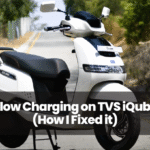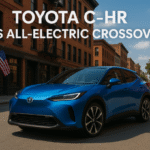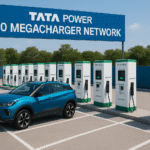Electric vehicles are no longer just city cruisers; they’re hitting the highways in droves. Weekend trips, extended commutes, and interstate jaunts are all becoming an accepted part of our electric vehicle existence.
What was once trivial is exponentially increasing in longevity, while the need for quicker and more reliable charging stations is expanding rapidly.
DC Fast Charging Market Set for Huge Growth
Recent research predicts that the DC fast charging sector will grow to be worth more than $180 billion by 2034, more than a 90.00% growth from the current value of the sector today.
That figure isn’t just large, it demonstrates the speed of change taking place within the electric vehicle world and the implications of that change for the infrastructure around it.
Expansion of the Charging Infrastructure
This growth isn’t simply attributed to market size or dollars, but increasingly relates to how people are driving. With more and more drivers converting to electric, the entire electric charging ecosystem has to accommodate it.
And DC fast chargers are becoming the go-to solution. They can power up most EVs to 80% in under half an hour, making them a must for road trips and daily routines alike.
We’re already seeing this transformation. Public charging stations held around 87% of the market share in 2024. That number is expected to grow by more than 26% each year through 2034. That’s not just a slow rollout, it’s a nationwide expansion.
Urban areas may be leading the trend, but they’re not alone. Highways, shopping centres, workplaces, and even smaller towns are getting on board. From city streets to suburban parking lots, everyone’s prepping for an all-electric future. Charging infrastructure is popping up in places where drivers need it the most.
Government and Automaker Support for DC Fast Charging Expansion
DC fast charging is no longer a luxury, it’s becoming essential. The U.S. government is investing $5 billion specifically to accelerate the rollout of DC fast charging stations nationwide.
The goal? Reduce range anxiety and make long-distance EV travel as easy as pumping gas.
Major automakers like GM, Ford, and Tesla aren’t sitting on the sidelines. They’re building coast-to-coast DC fast charging networks, often in partnership with charging firms.
Tesla’s Supercharger network already leads the pack, but others are catching up fast, expanding access beyond Tesla-only vehicles.
Private players are also stepping up. Companies are launching massive DC charging hubs equipped with multiple high-speed chargers, solar panels, and battery backups to support grid stability.
These aren’t just charge stops, they’re becoming destination spots with cafes, rest areas, and high-speed Wi-Fi.
Global Push for DC Fast Charging and Smart Technology
Countries around the world are racing to deploy DC fast chargers to support their EV targets. Norway leads with one of the highest DC charger-to-EV ratios globally.
Germany has already committed to constructing over 1,000 DC fast charging hubs by 2030. China? Already home to the largest DC fast charging network in the world by far, powering millions of EVs all day long.
Smart technology is changing the game. DC chargers now can connect with apps that provide availability in real time, pricing, and charge speed. Some even allow for reserving a charger in advance, which means less waiting around and less need for planning trips.
Interoperability is improving, too. More networks are now cross-compatible, meaning a single app or card can unlock multiple DC fast charging stations, making it even easier for drivers to plug in and hit the road.







